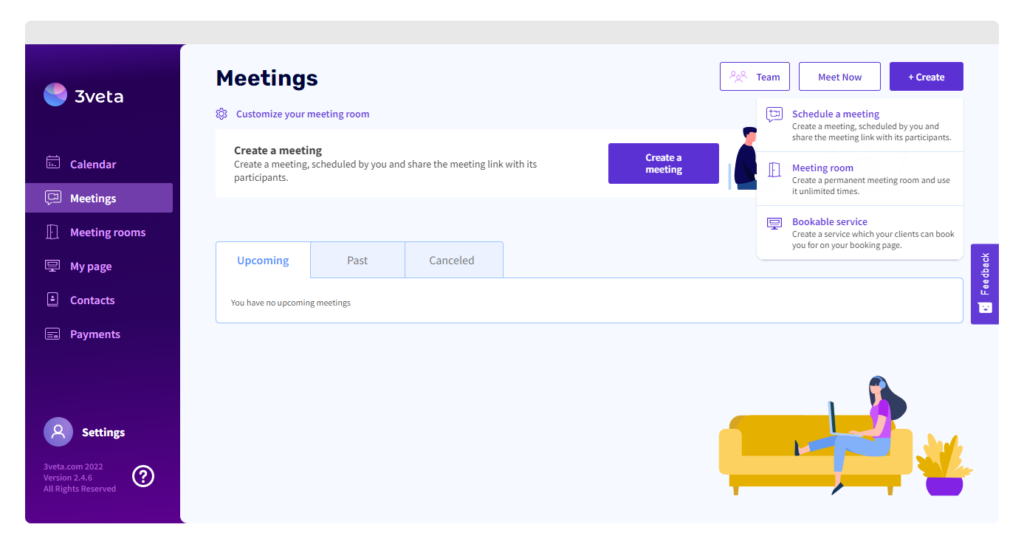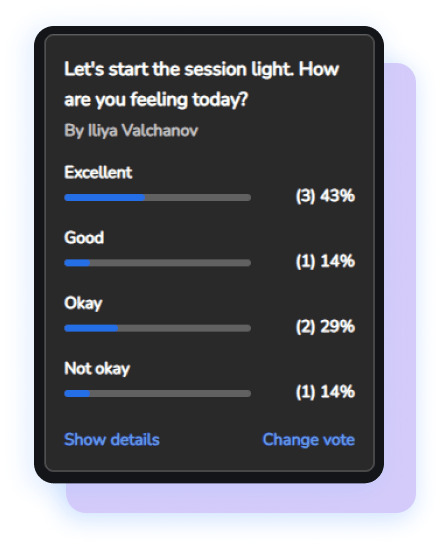Did you know that the most loved companies like Zapier, Basecamp, and Asana have distributed teams?
Yes, this means they can work from the comfort of home, coworking space, a café, or even a flight!
As luxurious as the freedom to work from anywhere sounds for distributed teams, managing them is no less than a struggle. They are more challenging than managing a fully remote team. Why? Because you have to manage people from multiple time zones.
But the good news is you can ace managing distributed teams if you have the right preparation.
In this article, we’ll walk you through 5 best practices to manage distributed teams.
Let’s dive in.
Table of contents
What are Distributed Teams?
Distributed teams or a distributed workforce is when employees are based in no single geographical area. They often work from across the world. It is characteristic for them to have different cultures and live in different time zones. Distributed teams may work both remotely or in-office.
5 Best Practices for Managing Distributed Teams
If your team is widespread across continents, you might face challenges like scheduling a team meeting only to find time zone clash, team members sending you messages like “can you please share the document that you shared yesterday? I can’t find it” and so on.
To end these struggles in your organization, here are 5 best practices to effectively manage distributed teams:
1. Centralize the communication
Communication is tricky, especially when setting up a virtual team. This is why you need to establish open & safe space for people to share opinions, updates, and queries. A simple way to do it is by creating a Slack channel to share opinions & ask queries.

To streamline the remote team collaboration, leverage asynchronous communication and encourage your team members to ask detailed questions.
This is why you need to set up a workflow optimization for remote employees so they don’t have to jump on Slack every time they work on a new task.
Here’s how to do it:
- Have storage space for shared files: With a shared cloud storage space, your team can quickly find the files without going haywire. They can view, comment and edit the files & share files with other team members.
For example, use Google Drive and insert different folders inside depending on the department and the project. Inside each folder, embed the documents or add a Google Docs file accessible to team members.

- Have a digital repository of common files: Build an online archive of each document. To achieve this, have project management software in place. Inside the tool, embed resources for each department based on the requirements.
For example, create a Notion page & embed resources like employee onboarding procedures, brand guidelines, product documentation, etc.
- Sync apps and software to improve productivity: Working on multiple projects with your team demands access to various tools in your organization. This is why you must sync your cloud storage software with several tools you use at work.
Here’s how syncing these apps can enable your team’s productivity:
- Save scanned documents like the business details, receipts, and invoices directly to your cloud storage space with a mobile scanning app
- Keep your ideas organized by syncing your cloud storage space with note-taking apps. For example, sync Google Drive with their note-taking app Google Keep
- Track the appointments by connecting your video call tools with your calendar. For example, connect 3veta with your CRM (through Zapier & Pabbly Connect) and have automatic updates to your CRM after a demo.
2. Hold structured meetings
In a virtual team setup, holding daily or weekly meetings does two things:
- Eliminates blockers that your team might be facing at work
- Builds team bonding which further fosters the company culture
Here’s how you can enable structured team meetings:
- Conduct 15 minutes daily standups to kick off the day to discuss the tasks and priorities of the day. Here, team members can talk about the blockers they could be facing and then split into breakout rooms or another meeting room to collaborate when needed.
Team meeting rooms: When remote employees face a blocker during a task, jump to team meeting rooms to discuss the blockers with other team members.
Private meeting rooms: When remote employees want to discuss a task or a project with a specific team member or your manager, jump into private meeting rooms.

- Conduct 1:1 meetings to give feedback to telecommuting employees. Ask them what excited them the most while working on the project, and what they disliked, and take notes to understand how you can improve the work processes for your team. To conduct such detailed 1:1 meetings, invite the other team member for a video meeting where you can exchange feedback.
In 3veta, you’ll see the ‘schedule a meeting’ option that lets you create & schedule a meeting and share the meeting link with team members you want to invite for 1:1 meetings. Moreover, you can record these meetings on the cloud storage and even download them to review the feedback later.

- Engage team members during video meetings. Use live reactions & polls to ask a specific question to the team. They can then respond to the questions using any of these specific features.
Here’s an example of how the Head of Marketing, Iliya Valchanov engaged team members with 3veta’s live poll feature.
He asked his team a question that led to the following results. Furthermore, these results can be viewed as a breakdown. He can see who voted for which option and find out the team members who are more engaged during the meetings.

3. Agree with the different time zones
Working with team members from different time zones means allowing them to work on their time. But, the one component where the difference comes for WFH employees is— conducting meetings. You might hold meetings in the morning, but it might vary for team members from different time zones.
When working with distributed teams, be flexible—make adjustments in your schedule. Set meetings when everyone is available—maybe, an hour earlier than the regular 9-5 routine. However, avoid keeping meetings too late.
Record the meetings and share them with the team members so the information discussed reaches them.
💡 Pro tip
Use 3veta’s time zone calibration feature to automatically find out the time zone of your team members and schedule the meetings accordingly.
4. Document the processes
Whether you hire a new team member or the existing team members get stuck while working on the project, it’s good to have detailed documentation to help your team members figure out the when, where & how.
Here’s how you can create detailed documentation for your team members:
- First, figure out the purpose that you are documenting. Ask yourself – why and how the organization will benefit from this document & then outline a brief description of the process.
- Decide who will be responsible for the process tasks. Define their role. Mention the team member’s designation who would be referring to the document.
- Provide a brief description of the things included and excluded in the process.
- Define the process boundaries—what causes the process to start, how it starts and ends, and when the process completes. Be as much detailed as you can be while defining these boundaries.
- Mention your expectation with this detailed process. Tell what makes this process successful or the results you expect.
- Share resources & references where your team can take help from.
- Put all the information together. Organize a brainstorming session with managers to review the document.
Here’s how Userpilot documented the entire process for the freelance writers working with them.
They have mentioned every minute detail like what Userpilot does, general writing guidelines & workflow for each writing assignment. Furthermore, they have shared the terms & conditions and how the writer gets paid once the article goes live.

5. Invest in the right tools
Whether collaborating with your team or improving the work processes, the right tools are much needed. Here are a few tools that we use at 3veta to keep our organization intact:
- Project management software: Trello for task management.
- Live chat and collaboration software: Slack to stay connected with your team and communicate daily activities.
- Note-taking software: OneNote for documenting every meeting, from meeting minutes to research & notes—everything inside this application.
- Cloud storage software: NextCloud to keep the documents saved in one space.
- Video conferencing software: 3veta to conduct video meetings with the team, external communication with clients & partners, and shared team calendar to view the latest appointments.
Summing it up
Managing distributed teams can seem tricky at first, but the five best practices we mentioned above are a great start. Analyze them, execute them and focus on the results they deliver. If they don’t, tweak them your way.
Want to get started with the right tools for your distributed team? Schedule a demo with Nikola from 3veta & see how you can improve the communication for your distributed teams.

Nidhi Kala
Nidhi Kala is a freelance writer for B2B SaaS brands in marketing, HR, and eCommerce. When she's not writing, her artistic mind is buried in creating a new journaling spread or exploring calligraphy scripts. Connect with her on LinkedIn.
